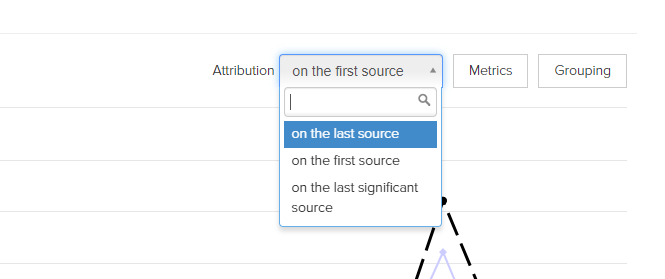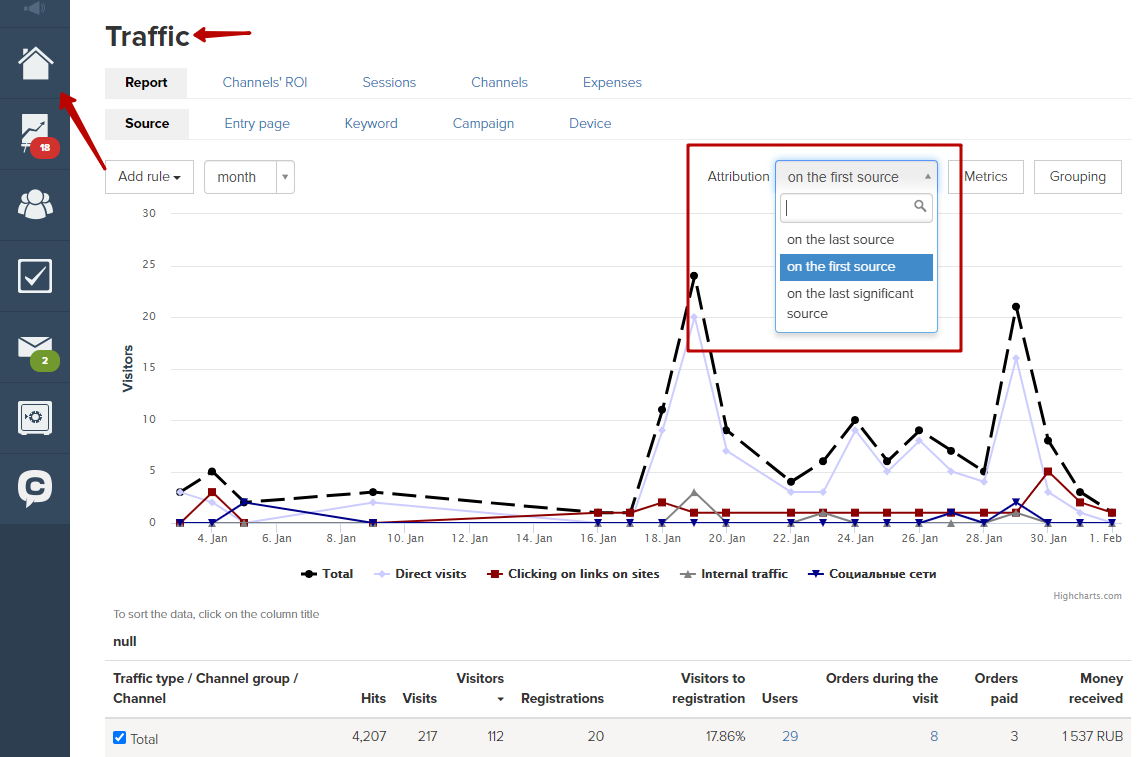Attribution is the definition of the traffic source due to which the conversion was made (registration, subscribing or ordering).
It allows you to customize the report on traffic sources in various ways.
Let's look at the example:
The visitor went to the website via Facebook advertisement, looked at several pages of the website and left. Later he came back to the website, but via the search engine results. And after a while he went to the website by entering the address in the browser line and made an order (conversion).
Thus, the visitor made three visits to the website.
Different attribution models can be used to determine the referral source:

The last click on a link
When using this model, for each visit, the system will determine the referral source at the moment, without taking into account the history of the visitor's visits.
In the example, the visitor has three visits, each of which received its own source. The last visit to be counted is a direct visit.
The model is often used when working with ads and campaigns focused on customer acquisition at the time of purchase, as well as when business is based primarily on transactions that do not include a decision stage. In addition, the model is convenient to use when analyzing internal clicking on the links within the website.

The first click on a link
This model uses the visitor's visits history. Namely, the traffic source of the very first visit. All subsequent visits of the visitor will be attributed to the first source.
In the example, the first visit of a visitor was made via Facebook ad.
The model should be used if there is often a delayed conversion - when a visitor takes a long time to make a purchase decision (or another desired action) and during the time of thinking can return to the website several times from any other traffic sources. Also, the model can be used to analyze the effectiveness of sources in attracting new visitors to the website.

The last significant click on a link
All sources can be conditionally divided into significant and secondary (insignificant). Secondary-source visits are attributed to a more significant previous source, allowing for a fuller measure of its effectiveness.
Visits from secondary sources are considered: redirections to the website from saved pages, to the typed address (direct visits), as well as internal clicking on links within a website.

In the example, the sources of the first and the second visits are significant (Facebook and search engine). The source of the third visit is insignificant (direct access).
Therefore, visitor visits are attributed to the second significant source - search engines.
This attribution model gives the right results for websites with fast conversions - one that happens within the same visit.

In Traffic' of your account you can set up a report using different attribution models - depending on your goals:

For our projects, we choose the “last click on a link” attribution model.
More precisely, according to following a link preceding registration. If a person first came through a direct link, then through an advertisement in social networks and registered as a result, we will save the last channel for him - “social network” as a source. Then he can make orders with us, but we will still assume that he initially learned about us from the social network.
We use technology such as cookies on our website to personalize content and ads, provide media features, and analyze our traffic. By using the GetCourse website you agree with our Privacy Policy and Cookies Policy.

please authorize